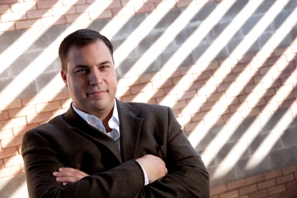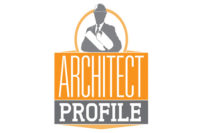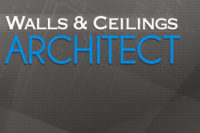Sixthriver Architects is a full service architecture firm and the largest corporate interiors firm in Austin, TX. The firm strives to demonstrate that inventive and elegant design is achievable, even within strict economic parameters, by respectfully listening and responding to the client’s needs and desires. The company started in 1994 in Austin, TX and has completed a variety of notable projects including the Austin Music Hall, Midtown Medical Office Campus, and Arboretum Park to name a few.
elegant design is achievable, even within strict economic parameters, by respectfully listening and responding to the client’s needs and desires. The company started in 1994 in Austin, TX and has completed a variety of notable projects including the Austin Music Hall, Midtown Medical Office Campus, and Arboretum Park to name a few.
W&C Architect interviewed Eric Heron, architect of record and shareholder of the company who prides himself on creating aesthetically pleasing projects that are sustainable over time and exceed the client’s expectations.
W&C Architect: How many years do you have in the profession?
I’ve been working in the industry for 17 years.
W&C Architect: What is your work history in this field?
When I came out of college in 1995, jobs in the profession were scarce. I interviewed with firms in Dallas, Houston and Austin. I wanted to work out of Austin so I took a job as a drafting and AutoCAD teacher at a local high school. After more than three years of teaching engineering and architectural graphics—which I truly enjoyed—I transitioned back into an architectural office. I have since worked with three firms in Austin. I started with a small, one-architect firm and moved on to a mid-sized company. Today, I am a shareholder and the architect of record for Sixthriver Architects, a full service architecture firm and the largest corporate interiors firm in Austin.
Over my career, I’ve built a diverse project portfolio with Sixthriver that includes commercial office buildings, medical labs, municipal and detail buildings, performance venues, warehouses and more.
W&C Architect: Where did you go to school?
I received a bachelor’s in Environmental Design from Texas A&M University.
W&C Architect:Did you have a specialization?
I’m a technical architect and I love coming up with creative solutions to the unique problems that arise with each project. I enjoy the construction administration portion of design just as much as the schematic phase of design.
W&C Architect:Do you approach architecture from an artistic or functional starting point? Are the two concepts exclusive? The two concepts should not be mutually exclusive. Design needs to play a role all the way through the construction of a project. The technical aspects of a project should be considered early on when you are doing schematic design and you still need to think about the artistic goals of a project at the end. The great architects understand both the technical and the artistic, applying them both in every stage of a project.
W&C Architect: If any, who are your role models? Most of my role models are teachers. Not necessarily professional teachers, but the people in my career that truly taught me something. Those that pass on knowledge are the lifeblood of this profession. The people that work under you and learn from you are your legacy. With that in mind, I take pride in teaching the interns and younger team members in our office something every day. I want them to end up being better architects than I am.
W&C Architect: What projects, other than your own work, do you find inspiring?
With such broad parameters, I would list The Burj Al Arab Hotel in Dubai, the Cathedral of Christ the Light in Oakland and the Beijing Olympic Stadium in China as inspirational.
W&C Architect:How many buildings have you designed? I have been involved in designing over 20 buildings of all types. I’ve designed office buildings, medical offices, performance venues, dining halls, churches, laboratories, retail buildings, multifamily and more.
W&C Architect: If you had to choose one to represent your work, what project would you choose? I would choose the Austin Music Hall. Located downtown, it has a distinct impact on Austin’s personality.
W&C Architect: What are your guiding principles when designing a structure?
I aim to design a project to meet as many of the client’s needs as possible. I design projects that are aesthetically pleasing, sustainable over a long time period and functional; make it so it isn’t ugly, make it so it lasts, make it so it doesn’t leak.
W&C Architect: If you could have any building to redesign—anywhere in the world—which would you like to address?
I wouldn’t redesign anything. As an architect, I learn from my past mistakes and past successes. Each new project is the culmination of my entire career experience. Instead of dwelling on past projects I want to ensure that I design my next project better.
W&C Architect: What types of products interest you?
I enjoy learning about any new, innovative products that improves the way we work. I’m interested in products that make the buildings and spaces we design operate more efficiently and look more aesthetically appealing.
W&C Architect:What types of products in the wall and ceiling industry really interest you?
I’m interested in acoustical products such as rain-screen products, moisture-control products and waterproofing products.









Report Abusive Comment